Leopard gecko morphs are the diverse color variations of the different lines (breeds) of leopard geckos developed by breeders of these pets. Leopard geckos are among the most popular pets in the world today. Of course, the leopard gecko has earned this success in part because of such qualities as ease of care, friendliness, understandability and cleanliness. But we still pay a lot of attention to appearance. Therefore, the variety of bred and pleasing to our eye color variants is sometimes a decisive factor in choosing a pet.
Currently there are hundreds of different hybrid and color lines of leopard geckos, bred by breeders and well-trained amateurs who strive to create new, popular morphs of leos. Versatile information on the Internet about care, breeding and genetics has led to the formation of a community of experts. They have even created a leopard gecko morph calculator to help beginners understand the variety of genetic variations.



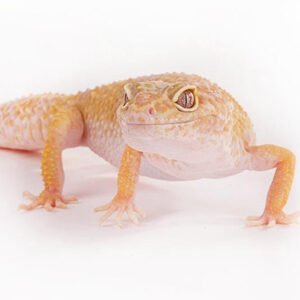












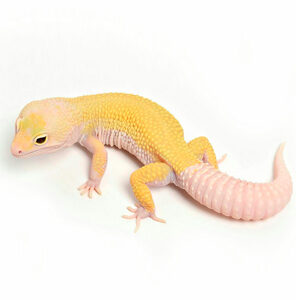

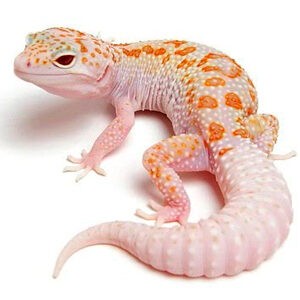




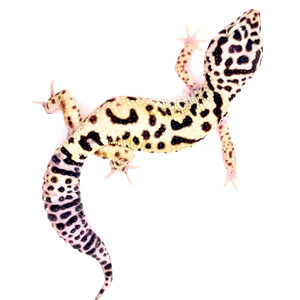





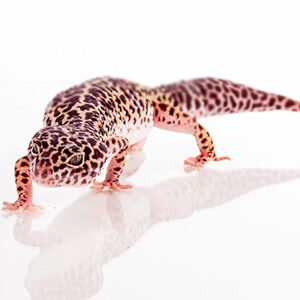













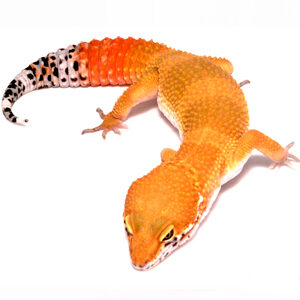





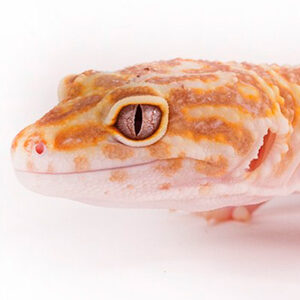

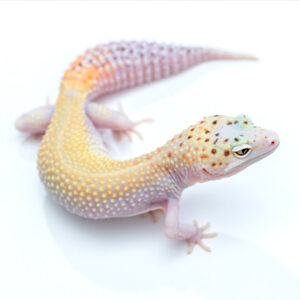
Many hobby breeders are now creating their own morphs, each with its own characteristics, color, shape and size. When breeding new lines, only your creativity sets the limits or helps in what you want to achieve. Although it must be admitted that breeding so-called “new” morphs is not easy. It is possible that the new morphs often turn out to be just a variant of existing morphs or repeat existing morphs. Therefore, when breeding new breeding lines, one must carefully study the already existing morphs in catalogs and other sources, as well as understand well the theory and practice of breeding new breeding lines.
When selecting geckos for breeding, the breeder must have a clear plan to achieve the desired result, with a thorough study and understanding of the genetics of his pets. It is very important that the geckos he acquires come from a known genetic line. This can be a problem. Due to the worldwide craze for leopard geckos and breeding by various hobbyists, the gene pool has become somewhat questionable in recent years.
Finding purebred animals with known genetic material has become much more difficult. Many so-called “purebred” animals may actually be heterozygous and also carry undesirable genes for that line in their genome, and this may even be known to the breeder, while strangely colored animals that should not be in that breeding line begin to appear when hatching from the eggs. When acquiring animals for breeding a new line, this point must be taken into account, as your intention to breed a new morph must be based on a solid genetic foundation. Therefore, it is a must to obtain leopard geckos for breeding from reliable sources that can guarantee the genetic purity of the animals.
Before you start your project of breeding a new morph, you need to study the kind of information that will help in creating the new morph. There are many different online sites that will inform you about the genetics of geckos, the dominant and recessive genes that carry certain traits, and which genes are responsible for the presence or absence of certain traits in the appearance of leopard geckos.
In planning your lineage, you may find helpful a morph calculator that provides fairly accurate breeding predictions based on leopard gecko genetics. (These genetic morph calculators change regularly, so you’d better Google them to find the most up-to-date one.)
A good way to gain the knowledge you need is also to meet experienced breeders on forums and social media. Most reptile breeders are very altruistic and willing to share their knowledge. Sharing experiences among enthusiastic breeders is the best way not only to gain the necessary knowledge, but also to avoid possible mistakes when creating a breeding plan.
The genetics of the leopard gecko is very fascinating once you start to understand it. It is possible to predict what will happen if you cross different specimens of geckos, and not just by observing their appearance – the phenotype. It is possible to breed different morphs of eublefars that differ in intelligence, socialization, and behavioral traits. Such traits can also be fixed, as they are inherited. Some geckos are more intelligent and social, others are more active, meaning they have different personality traits that are often genetically fixed and passed on to offspring.
Genetics also plays a role in something like animal care. Some morphs are very calm, while others are active and lively and are better handled by experienced terrarium caretakers. The calmer morphs are better suited for beginners and children. Some morphs, such as the Bandits and Mack Snows, are quite malleable, as are the Giants, they are descended from very quiet geckos. The Super Giant can be up to 30 inches long. Although larger than a Leopard Gecko, they are easy to keep as their uncomplicated nature makes them excellent pets.
The gigantism genes are particularly interesting to work with in breeding projects. If you were to cross a Super Giant with a normal sized leopard gecko, the offspring would be almost 100% giants. If a Super Giant is crossed with a Super Giant, their entire offspring will be 100 percent giant. And the appearance and behavior will be virtually identical to their parents. So the young males will copy their father in almost everything in coloration and character.
To maintain the purity of the line, breeders use line crossing (reproduction by crossing only purebred males with a homozygous genotype for the reproductive traits). In this process, the best individuals with the most distinctive breed characteristics are selected in each generation. Only such top individuals are used for further breeding within the line.
For example, there are many different lines of “Tangerine” bright orange geckos (tangerines), each with a slightly different appearance, texture or coloration. Many breeders take the best Tangerine individuals from different lines, cross them to combine their genotypes, refine and breed their own Tangerine line. Tangerine lines are known for their strong conformation and unique coloration. Therefore, many breeders continue to refine the different Tangerine lines to breed their own morph of Eublefars.
Changing the skin color, eyes and body pattern is one of the most popular areas for breeding new breeding lines. Depending on the presence of relevant genes in the genotype, many color variations and patterns can be obtained.
Some of us may remember from high school biology class the Pennett lattice, a simple method for determining the results of selection when the initial genetic material (genotype) is known. Phenotype refers to the appearance (color, size, patterning, etc.) of the gecko. A homozygous gecko has two of the same alleles in its genotype. That is, they carry the same trait.
If the alleles are different (one is dominant and the other is recessive), such a gecko is heterozygous because it carries both traits. In this case, only the dominant gene manifests in the phenotype (appearance) of the animal. The recessive gene does not manifest itself, but is also inherited. When breeding geckos, both parents must be heterozygous for the recessive gene to be expressed, and as the recessive gene, they must carry the same gene that the breeder expects to be expressed in his breeding work.
Only one gene can be responsible for the change of some traits in animals. It is easier to work with such traits. But there are traits for whose expression several genes are responsible. They are called polygenic because such traits are controlled by many genes that may be located in different parts of the genome and sometimes even in different chromosomes.
Some of the most popular lineages of leopard geckos are polygenic. These are jungles, stripes, mandarins, and bandits. An example of codominance (when both genes are expressed simultaneously) is Mack Snows and Giants. Recessive genes are expressed in such morphs as various Albinos, Blizzard, Patternless, and Eclipse.
The possibilities of creating new combinations with different genes and new mutations are truly limitless!
In breeding projects there are other aspects that must be considered and carefully executed. Compliance with all rules for the care and breeding of your geckos is a priority. Temperature regimes must be followed both when keeping geckos and incubating eggs. It is very important to monitor each egg closely.
During incubation, large breeders produce many eggs at once. And when these eggs are incubated together, it is sometimes difficult to determine which babies are from which breeding line. Therefore, breeding the different lines separately is more reliable in breeding practice. It is best to incubate eggs from different females separately. Also, these eggs should be carefully labeled. This way you can know the exact origin of each egg, and when the young have hatched, the breeder will know the exact genetics of each leopard gecko.
Also, the breeder can keep the pedigree of each gecko and if interesting traits appear in that generation, the breeder can reproduce the results. The incubation process must be monitored especially carefully to avoid occasional temperature jumps, which can also affect the appearance and health of the new generation.
If you have decided to start breeding your own leopard gecko morph, you have taken the first step on a great and exciting journey. You can start with just one project. The knowledge you acquire and the effort you put into exploring the world of leopard geckos will make your journey interesting and exciting. The study of genetics and breeding will reveal to you the amazing potential of these wonderful animals, this will also be a blessing to others to whom you will in turn pass on your knowledge. It will give you great satisfaction to see a baby hatch from an egg and know that you helped bring that baby into the world and witnessed this great miracle of life.